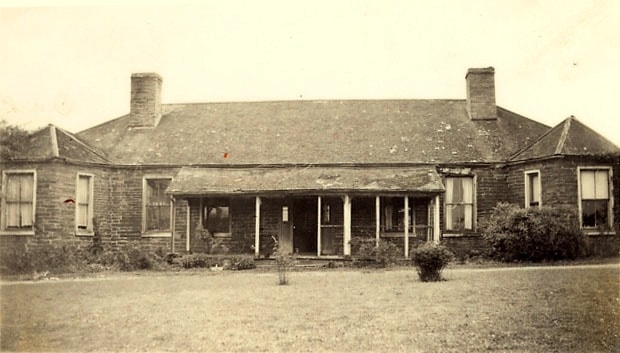Modern Mississauga presents Way Back Wednesdays - The history of Adamson Street
/Modern Mississauga and Heritage Mississauga have come together to present an ongoing series called “Way Back Wednesdays."
We’ll share information about the history of Mississauga here and answer your questions.
Today’s topic is the history of Adamson Street.
Adamson Street in Erindale Village is named in honour of Peter Adamson. Peter was born September 23, 1779 in Dundee, Scotland. He began his military career as an Ensign in the 71st Regiment of Foot on July 12, 1800 at age 21. A year later he was made Lieutenant, rising to the rank of Captain by 1808 and Major in 1814. He attained the rank of Colonel in 1816, and Brevet-Major-General in 1817.
Peter was loaned to the Portuguese Army to aid in training them in the “British way of fighting” during the Peninsular Wars against Napoleon Bonaparte. General Adamson served in 10 battles: Talavera, Fuentes-D’Onor, Cuidad Rodrigo, Badajos, Vittore, St. Sebastien, Nivelle, Nive and Salamanca. He was wounded once, a bullet through his hand on May 3rd, 1811 at the Battle of Fuentes-D’Onor. Peter was awarded seven gold medals for bravery and distinguished service, and the Order of Knight of the Tower and Sword, the highest honour in Portugal, for his heroic actions at the Battle of Salamanca on October 7, 1813 as a Major of the 4th Cacadores. His Portuguese unit became known as the Hunter’s Battalion, and he was gazetted a Brigadier-General in 1848, a rank he retained for life, until his death in 1865.
General Adamson first came to Canada in 1817 and purchased 200 acres, known as Lot 32, Concession 1, SDS, in Toronto Township. His home, built circa 1820, was first called Toronto House, and later became known as Thorne Lodge. Peter returned to Canada twice more, in 1819, and permanently settled here in 1821. In recognition for his considerable military service and rank, Peter was later granted in excess of 2000 acres in Peel and Halton, with additional acreage throughout the province, including 700 acres in the Norval area. Peter amassed impressive land holdings, at one time controlling over 20,000 acres of land.
He chose to build his home near Erindale in historic Mississauga in 1821 (in what is today Sheridan Homelands – modern Thorne Lodge Drive takes its name from General Adamson’s home). Thorne Lodge became the local meeting place, notary office, and government house until Chief Justice John Beverley Robinson built The Grange around 1832. The Anglican congregation, formed in 1825, first met in General Adamson’s home. This congregation, in part thanks to the General’s resources and contacts, secured ground for a graveyard and cemetery in 1826, which soon gave rise to St. Peter’s Anglican Church, with the first official service being held in November of 1827. General Adamson used his considerable influence, political contacts and personal friendship with Sir John Beverley Robinson to secure the services of Reverend James Magrath from Ireland for the fledgling parish.
In 1838 General Adamson was authorized to raise the First Provisional Battalion of Incorporated Militia of Upper Canada, consisting of 300 men. He was appointed Colonel of the battalion. His brother, Doctor Joseph Adamson, was the surgeon for the same Battalion. Under General Adamson’s guidance, the newly organized militia aided in policing the new territories, and as Justice-of-the-Peace General Adamson also mediated any disputes that may have arisen.
General Adamson was also a member of the Legislative Council of Upper Canada, where he earned the title “Honourable”. In addition to being locally known as “The Colonel” or “The General”, he was among the founders of two villages, Erindale and Norval, and two Anglican Churches, St. Peter’s in Erindale and St. Paul’s in Norval. In both villages, the main streets carry his family name. General Peter Adamson, K.T.S. (Knight of the Tower and Sword), was an influential and powerful figure in early Upper Canada and shaped the communities around him. He is buried at St. Peter’s Anglican Church, Erindale. His stone is engraved with the family coat-of-arms and the list of the battles in which he served.













